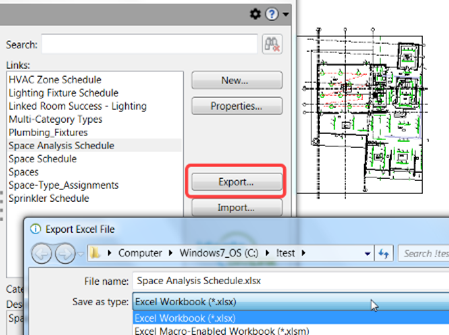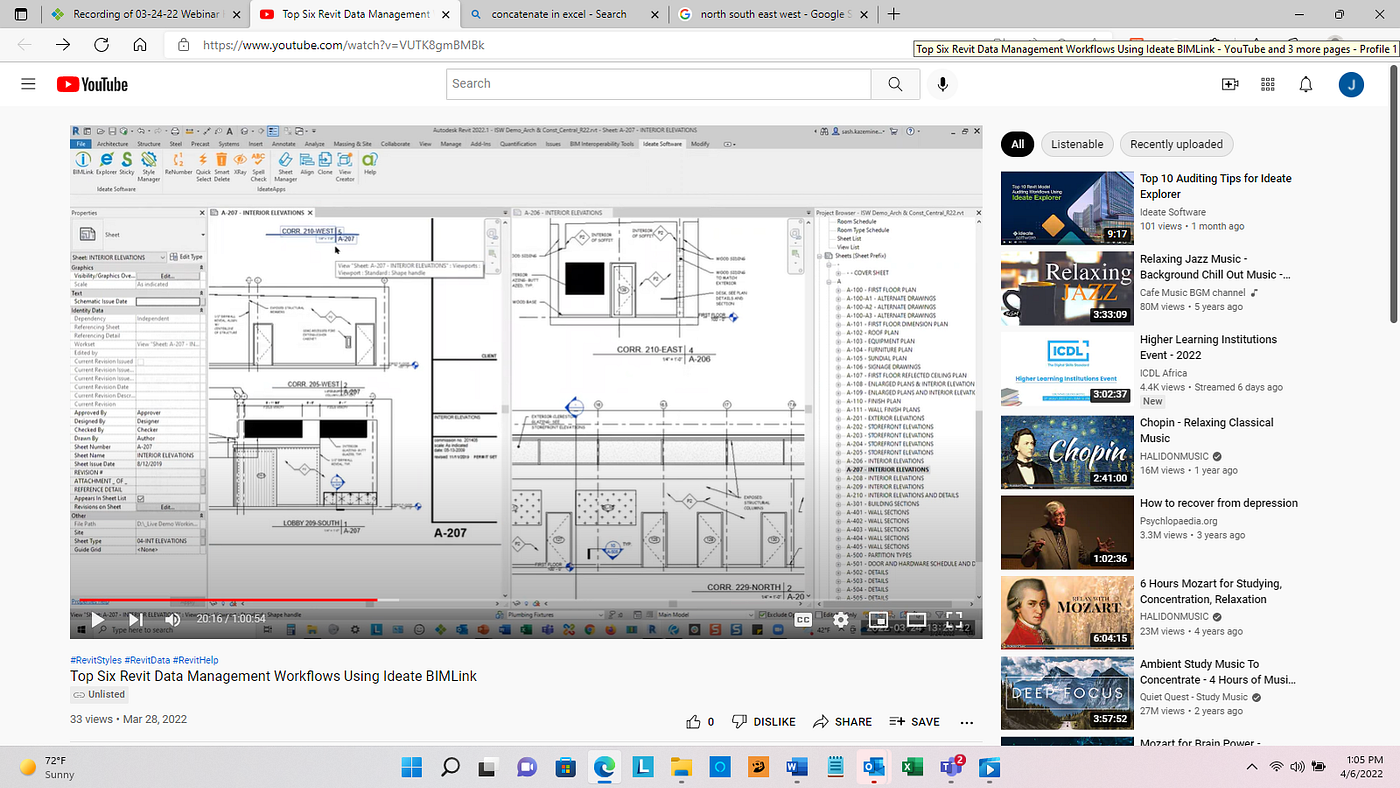Take Full Advantage Of Efficiency with Premier Revit Plugins
Wiki Article
Damaging Obstacles: Excel Importation Techniques for Advanced Revit Users
Are you a sophisticated Revit customer looking to take your abilities to the following degree? In this write-up, we will reveal you exactly how to break obstacles by leveraging Excel for importation in Revit. Check out different data importation techniques and master Excel assimilation to enhance your Revit modeling abilities. With our ideas and tricks, you can get rid of importation difficulties and come to be a true expert in utilizing Excel for your Revit projects. Prepare to master your Revit journey!Advanced Revit Users: Leveraging Excel for Importation
You can quickly take advantage of Excel for importation as an innovative Revit user. Excel is an effective device that can substantially improve your process and effectiveness in Revit. With its ability to deal with big quantities of information and execute complicated estimations, Excel can be a valuable asset in handling and arranging your job information.One way to leverage Excel for importation is by utilizing the "Link Excel" attribute in Revit. This function enables you to connect an Excel spreadsheet straight into your Revit task, enabling you to update and synchronize information in between the 2 programs. When dealing with routines or tracking changes in your job., this can be specifically beneficial.
An additional way to use Excel is by utilizing the "Import/Export" function in Revit. This function allows you to import and export data in between Revit and Excel, giving you the adaptability to deal with data in both programs. You can import information from Excel right into Revit to create aspects such as wall surfaces, spaces, or doors, and you can likewise export information from Revit to Excel for additional evaluation or reporting.

Exploring Information Importation Approaches in Revit Utilizing Excel
Discovering exactly how to import information from Excel right into Revit offers efficient approaches for incorporating details. When you import data from Excel, you can seamlessly move information such as room schedules, product listings, and tools data into your Revit task. This process permits you to save time and effort by staying clear of hands-on information entrance.To import information from Excel right into Revit, you can make use of the "Import/Export" attribute. This attribute enables you to map the Excel information areas to the matching Revit parameters, guaranteeing that the details is properly appointed within the design. By picking the proper import alternatives, you can manage how the data is imported and exactly how it connects with your project.
One more approach for importing data from Excel right into Revit is by utilizing Dynamo. With Eager beaver, you can develop personalized scripts that import data from Excel and control it within your Revit project.
Mastering Excel Combination for Advanced Revit Modeling
Grasping Excel assimilation for advanced Revit modeling includes utilizing efficient techniques to seamlessly move data and automate tasks within your job. By using the power of Excel, you can enhance your Revit modeling operations and save beneficial time. One crucial technique is importing information from Excel spread sheets directly right into your Revit design. This enables you to populate criteria, such as area names or material quantities, effortlessly. With a few straightforward steps, you can map the Excel columns to the matching Revit parameters and import the information accurately.An additional useful technique is exporting information from Revit to Excel. This enables you to remove details from your version, such as timetables or material amounts, and evaluate it in Excel making use of formulas, charts, see this here or various other effective tools. By leveraging the capabilities of Excel, you can execute intricate computations, develop custom-made records, and gain useful insights into your job.
In addition to data transfer, Excel assimilation can automate repetitive tasks in Revit. By producing macros or scripts in Excel, you can automate processes like creating sights, producing sheets, or using typical family members - revit tools. This not only conserves time however likewise ensures consistency across your project
To grasp Excel assimilation in Revit, it is essential to comprehend the data structure and how Revit communicates with Excel. By acquainting yourself with the readily available tools and techniques, you can open the complete potential of Excel combination and take your Revit modeling to the following level.
Overcoming Importation Difficulties: Excel Techniques for Revit Professionals
When conquering importation difficulties, it is very important to be accustomed to effective Excel techniques that can profit specialists in Revit. As a sophisticated Revit customer, you comprehend the value of seamlessly importing information from Excel right into your jobs. You may experience numerous challenges along the way. By utilizing reliable Excel methods, you can conquer these obstacles and improve your performance.
An additional beneficial method is utilizing the "Transpose" feature in Excel. This allows you to transform information from rows to columns or vice versa. When importing information into Revit, this can be particularly practical when you have information in a vertical style in Excel, however you need it to be in a straight layout in Revit.
Furthermore, using Excel formulas such as VLOOKUP and INDEX-MATCH can substantially help in mapping information from Excel to Revit. These solutions allow you to look for certain values in Excel and obtain matching data from an additional column. This can save you visit the website time and effort when importing large datasets right into Revit.
Excel Data Importation Tips and Tricks for Advanced Revit Users
By acquainting on your own with reliable Excel suggestions and tricks, you can enhance your information importation process as an innovative customer of Revit. Excel is an effective tool that can greatly help with the importation of information right into Revit, conserving you time and boosting your productivity. One helpful tip is to use the "Text to Columns" feature in Excel to separate data into different columns based on a delimiter. This can be particularly practical when you have information in a single column that requires to be divided right into several columns in Revit. In addition, utilizing Excel's "Paste Special" feature permits you to paste information from Excel right into Revit while maintaining format, such as cell shade look at this site or font style. This can be particularly valuable when importing information that needs particular formatting in Revit. One more valuable method is to use Excel's "Locate and Replace" function to quickly make adjustments to your data before importing it right into Revit. For instance, you can conveniently replace specific message or personalities with others, saving you the time and initiative of by hand modifying the information in Revit. By utilizing these Excel pointers and methods, you can improve your information importation procedure and become much more competent in utilizing Revit.
Verdict
You have now learned important methods for importing information from Excel right into Revit as an innovative customer. By leveraging the power of Excel assimilation, you can simplify your modeling procedure and conquer any kind of importation challenges that may develop. With these pointers and techniques, you will be able to master information importation and improve your Revit abilities. So proceed, damage those barriers and stand out in your Revit projects!
When importing data into Revit, this can be especially practical when you have information in a vertical format in Excel, however you need it to be in a straight style in Revit.
In addition, utilizing Excel formulas such as VLOOKUP and INDEX-MATCH can significantly assist in mapping information from Excel to Revit. Additionally, making use of Excel's "Paste Special" attribute allows you to paste data from Excel into Revit while maintaining format, such as cell shade or font design.
Report this wiki page